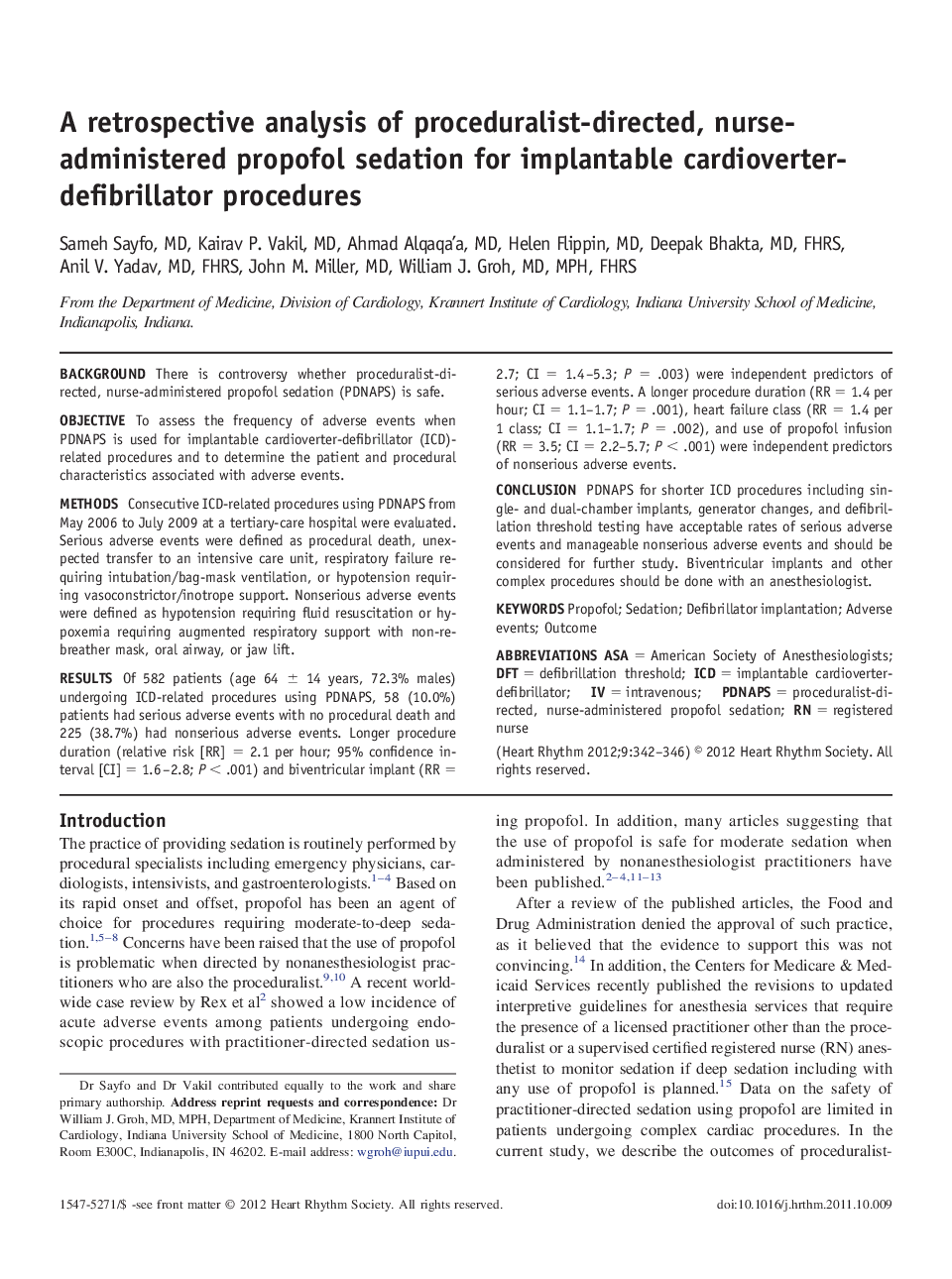| کد مقاله | کد نشریه | سال انتشار | مقاله انگلیسی | نسخه تمام متن |
|---|---|---|---|---|
| 2922639 | 1175851 | 2012 | 5 صفحه PDF | دانلود رایگان |

BackgroundThere is controversy whether proceduralist-directed, nurse-administered propofol sedation (PDNAPS) is safe.ObjectiveTo assess the frequency of adverse events when PDNAPS is used for implantable cardioverter-defibrillator (ICD)-related procedures and to determine the patient and procedural characteristics associated with adverse events.MethodsConsecutive ICD-related procedures using PDNAPS from May 2006 to July 2009 at a tertiary-care hospital were evaluated. Serious adverse events were defined as procedural death, unexpected transfer to an intensive care unit, respiratory failure requiring intubation/bag-mask ventilation, or hypotension requiring vasoconstrictor/inotrope support. Nonserious adverse events were defined as hypotension requiring fluid resuscitation or hypoxemia requiring augmented respiratory support with non-rebreather mask, oral airway, or jaw lift.ResultsOf 582 patients (age 64 ± 14 years, 72.3% males) undergoing ICD-related procedures using PDNAPS, 58 (10.0%) patients had serious adverse events with no procedural death and 225 (38.7%) had nonserious adverse events. Longer procedure duration (relative risk [RR] = 2.1 per hour; 95% confidence interval [CI] = 1.6–2.8; P < .001) and biventricular implant (RR = 2.7; CI = 1.4–5.3; P = .003) were independent predictors of serious adverse events. A longer procedure duration (RR = 1.4 per hour; CI = 1.1–1.7; P = .001), heart failure class (RR = 1.4 per 1 class; CI = 1.1–1.7; P = .002), and use of propofol infusion (RR = 3.5; CI = 2.2–5.7; P < .001) were independent predictors of nonserious adverse events.ConclusionPDNAPS for shorter ICD procedures including single- and dual-chamber implants, generator changes, and defibrillation threshold testing have acceptable rates of serious adverse events and manageable nonserious adverse events and should be considered for further study. Biventricular implants and other complex procedures should be done with an anesthesiologist.
Journal: Heart Rhythm - Volume 9, Issue 3, March 2012, Pages 342–346